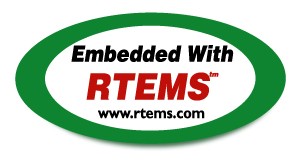


 Getting Started with RTEMS
Getting Started with RTEMS
If you are on a host operating system that uses Yum, you are fortunate because this is the one of the simplest ways to install the tools. After locating the appropriate directory on the RTEMS Yum Repository using the instructions in Locating the RPMs for your GNU/Linux Distribution, you will need to install the following RPMs:
You can use the search within page feature of your browser to locate the RPMs with "release" or "yum" in their names.
You will need to download the RPMs above or RPM can be given the URLs for them and it will fetch them for you. Either way, the commands similar to the following will install the common or base RPMs required.
rpm -U rtems-4.9--release-<VERSION>-<RPM>.<DIST>.noarch.rpm \
rtems-4.9--yum-conf-<VERSION>-<RPM>.<DIST>.noarch.rpm
Once these are installed, Yum knows about the RTEMS Yum repository for /opt/rtems-4.9. This means that you can install and upgrade RTEMS Toolsets just like the packages provided by your distribution. To install complete C and C++ toolset targeting the SPARC architecture for the RTEMS 4.9 Release series, commands similar to the following will be used.
yum install /opt/rtems-4.9-auto* yum install /opt/rtems-4.9-sparc-*
The first command installs GNU autoconf and automake which are used by all RTEMS targets. The second command installs the complete sparc-/opt/rtems-4.9 toolset including all dependencies.
Copyright © 1988-2008 OAR Corporation